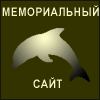| |
6. Что плохого в усилении соревнования между группами в организации?
7. Как достичь гармоничного сотрудничества в рамках единой организации
сотрудников, являющихся носителями разных культур?
8. Возможна ли успешная деятельность организации с инженерной культурой в
сегменте рынка, несущем исполнительскую культуру?
9. Какие факторы важнее для развития обучаемости организации (
структурно-функциональные или образовательные?
10. Возможна ли низкая организационная креативность у предприятия, где
работают сотрудники с высокой индивидуальной креативностью? Почему?
Литература
1. Акопянц А. «1C» - компании и продукту. Компьютерра. 1999. № 3 (
(281(282).
2. Бурлачук Л.Ф., Королев Д.К. Адаптация опросника для диагностики пяти
факторов личности. Вопросы психологии. 2000. №1.
3. Лютенс Ф. Организационное поведение. ( М.: Инфра-М. 1999. ( 692 с.
4. Моргунов Е.Б. Управление персоналом: исследование, оценка, обучение. (
М.: Бизнес-школа «Интел-Синтез». 2000. ( 264 с.
5. Ньюстром Дж.В., Дэвис К. Организационное поведение. Поведение человека
на рабочем месте. ( С.-Петербург: Питер. 2000. ( 448 с.
6. Филонович С.Р. Предисловие научного редактора. В кн.: Лютенс Ф.
Организационное поведение. ( М.: Инфра-М, 1999.
7. Heller R. The Change Managers. Management Today: 25th Anniversary
Issue. 1991. PP. 12(16.
8. Argyris C. and Schon D. Organizational Learning II: Theory, Method,
and Practice. Reading, MA: Addison-Westley. 1996.
9. Organizational Learning. Thousand Oaks. Cohen M.D. & Sproull L.S., eds.
CA: Sage. 1996.
10. Leavitt H.J. Managerial Psychology. The University of Chicago Press.
1969. 433 p.
11. Levitt B. and March J.G. Organizational Learning. Annual Review of
Sociology, 14,1998. PP. 319(340.
12. Kim D.H. The Link between Individual and Organizational Learning.
Sloan Management Review. 1993. Vol. 35. PP. 37(50.
13. Schein E.H. The Three Cultures of Management: Implications for
organizational Learning. Sloan Management Review. 1996. Vol. 38. PP. 9(20.
14. Toffler A. The Adaptive Corporation. Cover. UK. 1985. 217 p.
15. Moran E.T. and Volkwein J.F. The Cultural Approach to the Formation
of Organizational Climate. Human Relations, 45.1992. PP. 19(47.
16. Sackmann S.A. Cultural Knowledge in Organizations: Exploring the
Collective Mind. Newbury Park, CA: Sage. 1991.
17. Verbeke W., Volgering M., and Hessels M. Exploring Conceptual
Expansion 'wliliin the Field of Organizational Behavior: Organizational Climate
and Organizational Culture. Journal of Management Studies. 1998. Vol. 35. № 3.
PP. 303(330.
18. Aquino K. and Reed A. II. A Social Dilemma Perspective on Cooperative
Behavior in Organizations: The Effects of Scarcity, Communication, and Unequal
Access, on the Use of a Shared Resource. Group & Organizational Management.
1998. Vol. 23. № 4. PP. 390(413.
19. Pruitt D.G. Achieving Integrative Agreements. In Negotiating in
Organizations. Bazerman M.H. and Levicki R.J., eds. Beverly Hills, CA: Sage.
1983. PP. 35( 67.
20. Pruitt D.G. and Rubin J. Social Conflict: Escalation Stalemate and
Settlement. New York: Random House. 1986.
21. Walton R. and McKersie R. A Behavioral Theory of Negotiation. New
York: McGraw Hill. 1965.
22. Volkema R.J. and Gorman R.H. The Influence of Cognitive Based Group
Composition on Decision-making Process and Outcome. Journal of Management
Studies. 1998. Vol. 35. № 1. PP. 105(121.
23. Murray J.B. Review of Research on the Myers-Briggs Type Indicator.
Perceptual and Motor Skills, 70.1990. PP. 1187(1202.
24. Neuman G.A., Wagner S.H., and Christiansen N.D. The Relationship
between Work-Team Personality Composition and the Job Performance of Team.
Group and Organization Management. An International Journal. 1999. Vol. 24. № 1
(March), PP. 28( 46.
25. Driskell J.E., Hogan R., and Salas E. Personality and Group
Performance. Review of Personality and Social Psychology, 14.1988. PP. 91(112.
26. Digman J.M. Personality Structure: Emergence of the Five-factor Model.
Annual Review of Psychology, 41. 1990. PP. 417(440.
27. Hackman J.R. The Design of Work Teams. In Lorsch L, ed. Handbook of
Organizational Behavior. New York.: Prentice Hall. 1987.
28. Holland J.L Making Vocational Choices: A Theory of Vocational
Personalities and Work Environments. Engelwood Cliffs., NJ: Prentice Hall. 1985.
29. Muchinsky P.M. and Monahan C.J. What Is Person-environment
Congruence? Supplementary versus Complementary Model of Fit. Journal of
Vocational Behavior, 31. 1987. PP. 268(277.
30. Jackson J.W. How Variations in Social Structure Affect Different
Types of Intergroup Bias and Different Dimensions of Social Identity ina
Multi-Intergroup Setting Group Process and Intergroup Relations. 1999. Vol. 2
|
|




